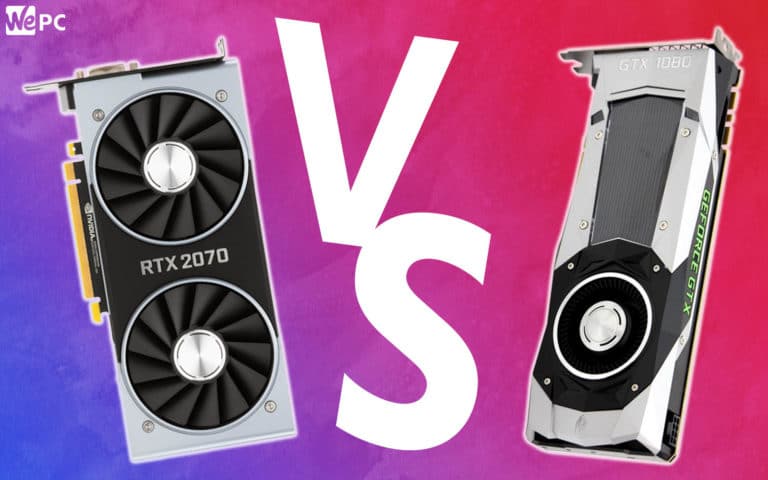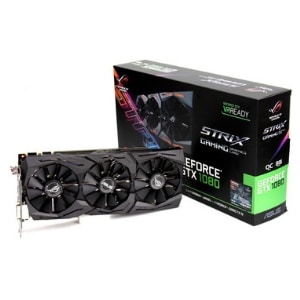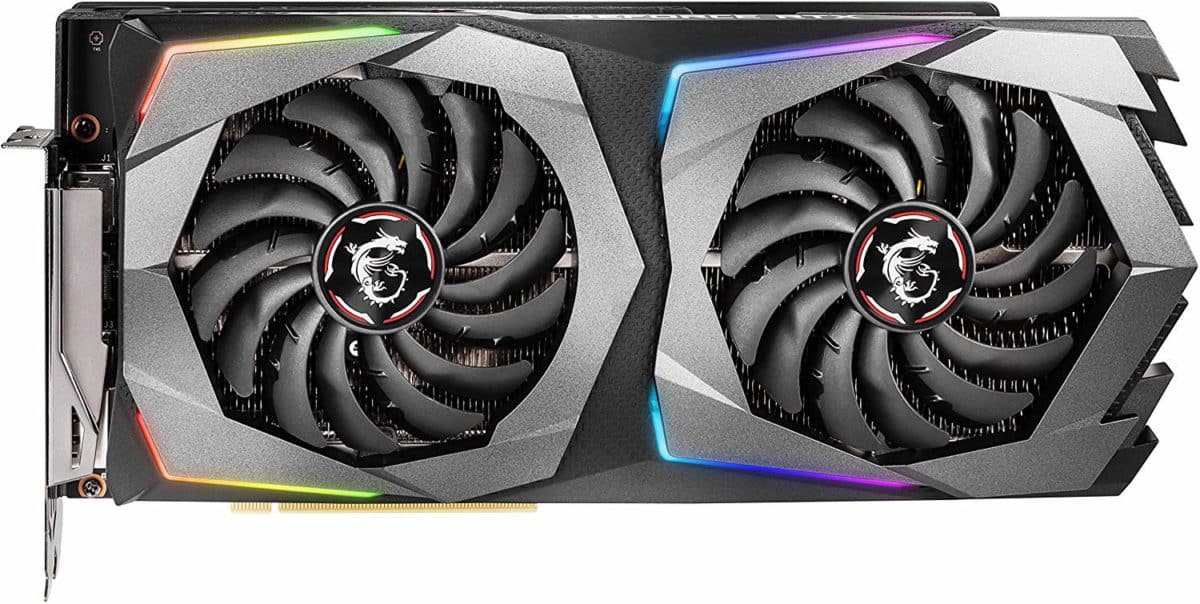2070 vs 1080
In this article, we have compared the differences between the GTX 1080 and RTX 2070 to discover which one will come out on top. Is it worth spending the extra cash or not?

With Nvidia having launched their revolutionary Turing GPU architecture around three years ago, their GPU lineup has extended itself from entry-level GTX cards to more advanced RTX cards that offer a range of advanced features, including ray-tracing.
With that being said, it’s no secret that Nvidia RTX graphics cards are considered to be more powerful than other types of gaming cards currently on the market. However, when it comes to Nvidia’s older generation GTX offerings, the distinction between the two kinds is not so clear cut.
In many ways, the GTX 1080 and the RTX 2070 are pretty similar. So, to help you decide whether or not to upgrade from the GTX 1080 to the RTX 2070, we’ve crafted this helpful guide. Below, we’re going to be exploring the differences between the two and decide which one comes out on top.
Architecture
The first comparison we’re going to draw is from the architecture of each card. To simplify, architecture indicates the overall speed and performance that you can expect to get from your gaming card, so it’s very important to consider before making a purchase.
For starters, we’re going to take a look at the GTX 1080, which is powered by Nvidia’s award-winning Pascal™ architecture. As part of Nvidia’s lineup of GeForce 10-series graphics cards, the GTX 1080 will be able to deliver a faster performance of up to 3x that of older generation cards, all the while being able to handle good power and speed across multiple games, including VR.
However, in comparison to the upgraded RTX 2070, the GTX 1080 struggles to rival. As part of Nvidia’s 20-series graphics cards, the RTX 2070 features a flurry of new and improved additions. For example, it features Nvidia’s cutting edge Turing architecture that will be able to provide a fully immersive gameplay experience, all the while improving speed by up to 6x in comparison to older models. It also will provide you with the ability to incorporate AI-powered DLSS into your games for smooth graphics that won’t lag.
Cooling
The next feature we’re going to be exploring is the cooling capabilities of each card. When selecting a new card, cooling is an important feature to consider because it indicates how well the card will be able to handle overclocking, as well as how likely it is to overheat while playing high-resolution games.
Unfortunately, the Nvidia GTX 1080 doesn’t have the best cooling capabilities we’ve seen. In fact, some of the older generation GTX 980 models are able to run cooler than the upgraded 1080. However, it will operate consistently at a default GPU temperature of around 82 degrees, so the plus side is that you won’t have to worry about it becoming overheated.
However, if you’re considering the GTX 1080, you may want to think about purchasing a separate cooling system, especially if you plan on overclocking or running 1080p games.
On the other hand, Nvidia RTX 2070 performs a little better in the cooling department. For starters, it features a built-in cooling unit, as well as a backplate that is made from metal and serves as an additional cooling feature.
It also utilizes a dual-fan cooling system, which will help to keep it running smoothly without becoming overburdened while operating even the most demanding of games. However, many users find that fans can operate quite loudly, which is something to keep in mind.
Resolution
This brings us on to our next consideration: the resolution. In line with the rest of the 20-series lineup, the RTX 2070 offers a USB-C VirtualLink port, which is designed to support all VR headsets of today, without having to go to the trouble of using extra cords.
In addition, it’s also a great card to invest in. As 8K displays roll out in the future, Nvidia has ensured that you will be able to plug your RTX 2070 into them by using only one DisplayPort 1.4 cable at 60Hz, which the GTX 1080 cannot offer.
This newer card also supports a wider range of video standards, allows for higher resolutions, and won’t overburden your processor as much as the GTX 1080 will while powering high-res games. This means that you’ll be able to enjoy 4K at 60Hz without breaking the bank. It’s a really great card for the price.
As for the slightly older GTX 1080, even to this day, it remains an impressively strong graphics card for PC gaming, particularly at high resolutions. If paired with two DisplayPort 1.3 connectors, it will be able to offer a maximum resolution of 7680×4320 at 60Hz (the same as the RTX 2070) and, though it may not be as powerful as the RTX 2070, it will still be able to operate newer games at a 1440p 60Hz or 1080p 144Hz. However, you might find that it isn’t able to smoothly operate newer games at 4K, which is something to consider before making a purchase.
Ray tracing?
Nowadays, revolutionary ray tracing is often considered a must-have within the gaming community as it means that the GPU is able to utilize light and shadow effects, which will lead to a more realistic gaming experience.
Besides boasting the advanced Turing core architecture and higher memory, the Nvidia RTX 2070 graphic card features a mix of cores that are able to support both ray tracing and DLSS (deep learning supersampling).
On the other hand, while the GTX 1080 can technically be used for ray tracing, as it doesn’t feature an RTX system, it means that you will only be able to achieve it at around 1080p. This is something to keep in mind, particularly if you want to make the most out of lighting and shadow effects.
VRAM
Now for the nitty-gritty part. The GTX 1080 has, in total, 2,560 CUDA cores, while the RTX 2070 has slightly less, 2,304. Interestingly, the slightly older GTX 1080 also features higher clock speeds, as well as more texture units, which might make you wonder ‘Is it worth upgrading?’
Well, though the 2070 falls slightly behind in these specifications, it does boast a GDDR6 memory, which is, in turn, able to lend the graphics card a 50% higher memory bandwidth than older generation cards, including the 1080. In addition to this, the RTX 2070 also features a larger die-size than the GTX 1080. It has 3.6 billion extra transistors and is built using Turing architecture as opposed to Pascal, which not only makes it a more powerful card, but one that is better equipped to handle the demands of today’s games.
Bottom Line
So, which one is right for you? Well, though the RTX 2070 is the more superior gaming card, we have to acknowledge that the GTX 1080’s performance is admirable. In fact, the biggest difference between the two comes down to the ray-tracing capabilities, in which the RTX 2070 is far more equipped and will allow you to play next-generation games in 4K. It’s a fantastic card for the money.




